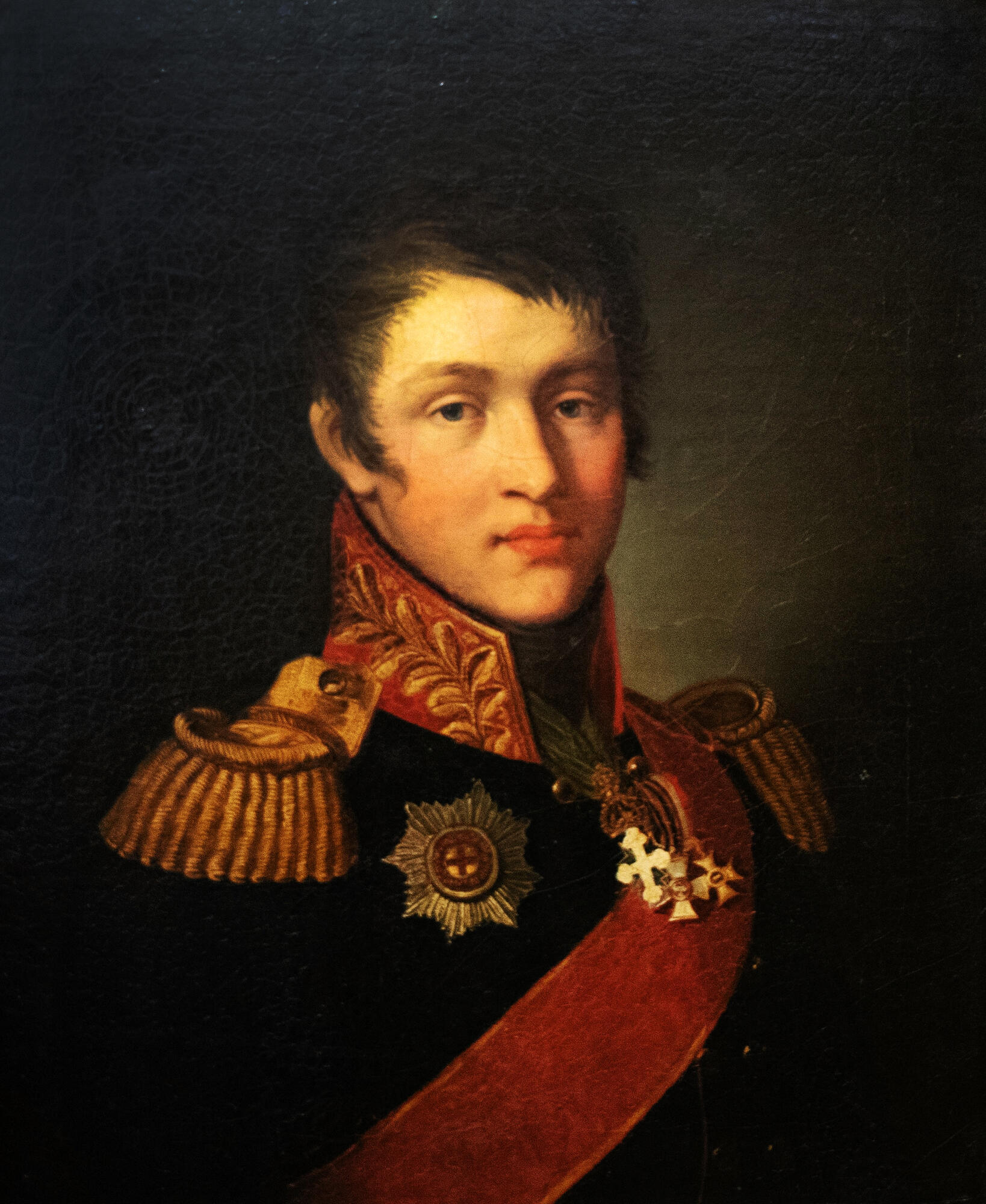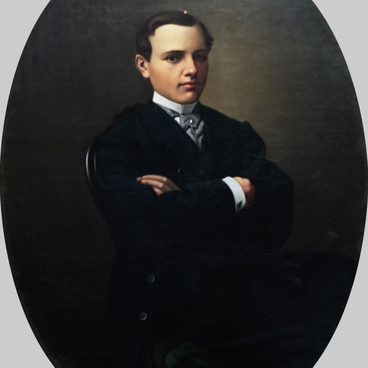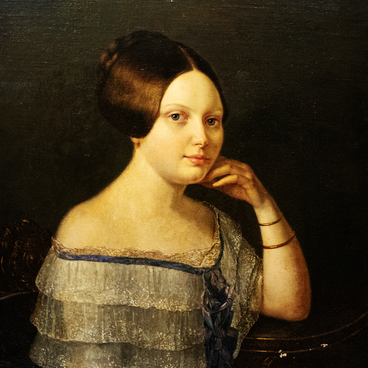When captured in this photo, Arkady Suvorov was about 25 years old. By this age, he had been promoted to Lieutenant General and served as the Commander of the 9th Infantry Division, stationed in Right-Bank Ukraine.
The campaign record of General Suvorov can be traced by the orders depicted in the portrait. Arkady took part in the Italian and Swiss campaigns led by Alexander Suvorov, and in the wars with France and Austria.
On his chest we can see the Order of St. George, 4th degree (1807). The Imperial Order of Saint George is the highest military decoration of the Russian Empire.
The order was instituted by Empress Catherine II on November 26, 1769, to decorate officers for merits on the battlefield and length of military service. The 4th degree is the lowest. However, in order to recommend someone for the order, the Military Collegium had to provide a detailed account of the feat and collect evidence before submitting it to the monarch for approval.
The white cross of the Sardinian Order of Saint Mauritius and Saint Lazarus is evidence of his participation in the Suvorov campaign in 1799.
Austria’s Order of Maria Theresia, 4th degree. The highest and most honorable military decoration of the Austrian Empire. The order was instituted by Empress Maria Theresia on June 18, 1757, to reward officers for merit and valor in battle.
On his chest, he has the Order of St. Anna, 1st class, with a red clouded ribbon running over the shoulder. The order was established by the Duke of Holstein-Gottorp as a dynasty decoration in 1735. On April 5, 1797, by decree of Emperor Paul I, it was introduced into the award system of the Russian Empire to decorate clergy, military, civil, and court officials, as well as foreigners. In addition to a 10-centimeter-wide clouded ribbon, it comes with a star on the right side of the chest (all other Russian orders were to be worn on the left side).
Lieutenant General Arkady Suvorov died tragically while crossing the RYmnik River (this is the river’s name in Russian) on April 13, 1811. There is a popular story that Suvorov drowned while trying to save his coachman. This version of events was first offered by the adjutant and biographer of Alexander Suvorov, Yegor Fuchs. It has not been confirmed by any evidence thus far.
On the reverse side of the painting there is an inscription: ‘Prince of Italy, Count Suvorov-Rymninsky Arkady Alexandrovich is married to Naryshkina.’
For a long time, the portrait was kept at the A. V. Suvorov Museum in St. Petersburg (Leningrad) and was returned to the RAmenskoye History and Art Museum in 1989.
The campaign record of General Suvorov can be traced by the orders depicted in the portrait. Arkady took part in the Italian and Swiss campaigns led by Alexander Suvorov, and in the wars with France and Austria.
On his chest we can see the Order of St. George, 4th degree (1807). The Imperial Order of Saint George is the highest military decoration of the Russian Empire.
The order was instituted by Empress Catherine II on November 26, 1769, to decorate officers for merits on the battlefield and length of military service. The 4th degree is the lowest. However, in order to recommend someone for the order, the Military Collegium had to provide a detailed account of the feat and collect evidence before submitting it to the monarch for approval.
The white cross of the Sardinian Order of Saint Mauritius and Saint Lazarus is evidence of his participation in the Suvorov campaign in 1799.
Austria’s Order of Maria Theresia, 4th degree. The highest and most honorable military decoration of the Austrian Empire. The order was instituted by Empress Maria Theresia on June 18, 1757, to reward officers for merit and valor in battle.
On his chest, he has the Order of St. Anna, 1st class, with a red clouded ribbon running over the shoulder. The order was established by the Duke of Holstein-Gottorp as a dynasty decoration in 1735. On April 5, 1797, by decree of Emperor Paul I, it was introduced into the award system of the Russian Empire to decorate clergy, military, civil, and court officials, as well as foreigners. In addition to a 10-centimeter-wide clouded ribbon, it comes with a star on the right side of the chest (all other Russian orders were to be worn on the left side).
Lieutenant General Arkady Suvorov died tragically while crossing the RYmnik River (this is the river’s name in Russian) on April 13, 1811. There is a popular story that Suvorov drowned while trying to save his coachman. This version of events was first offered by the adjutant and biographer of Alexander Suvorov, Yegor Fuchs. It has not been confirmed by any evidence thus far.
On the reverse side of the painting there is an inscription: ‘Prince of Italy, Count Suvorov-Rymninsky Arkady Alexandrovich is married to Naryshkina.’
For a long time, the portrait was kept at the A. V. Suvorov Museum in St. Petersburg (Leningrad) and was returned to the RAmenskoye History and Art Museum in 1989.



